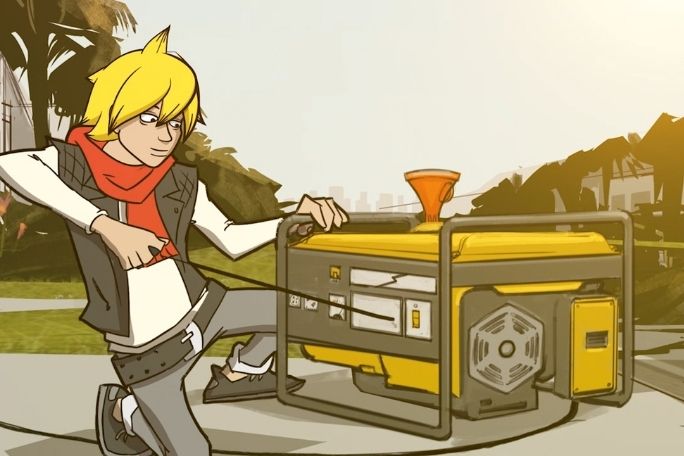Lesson summary
Students explore the role of technology in developing solutions to real-world problems. They begin by thinking about what technology is, how and why we use it, and some of the problems associated with relying on technology. Students then think about how they could use technology when developing a solution to the problem presented in the Global Problem Solvers series. They then analyse this technology, focusing on the potential problems associated with using it and thinking about how these problems could be addressed. Finally, students work collaboratively to create annotated technical drawings that describe their technology and explain how associated problems could be addressed. Students share their work with the class through a gallery walk format.
Learning intentions:
Students will...
- understand what technology is and recognise different types of technology
- understand that technology can play an important role in addressing real world problems
- understand the opportunities and challenges associated with technology
Success criteria:
Students can...
- work collaboratively
- participate in class and group discussion
- think critically about their own ideas and the ideas of others
- communicate design ideas through annotated technical drawings
Lesson guides and printables
Curriculum links
Select your curriculum from the options below.
Lesson details
Curriculum mapping
Australian curriculum content descriptions:
Year 5 & 6 Design and Technology:
- Investigate how electrical energy can control movement, sound or light in a designed product or system (ACTDEK020)
- Generate, develop and communicate design ideas and processes for audiences using appropriate technical terms and graphical representation techniques (ACTDEP025)
- Negotiate criteria for success that include sustainability to evaluate design ideas, processes and solutions (ACTDEP027)
Syllabus outcomes: ST3-5WT, ST3-6PW, ST3-7PW, T4.4.1
General capabilities: Critical and Creative Thinking
Relevant parts of Years 5 & 6 Design and Technologies achievement standards: Students explain how social and technical considerations influence the design of solutions to meet a range of present and future needs. Students generate and record design ideas for specified audiences using appropriate technical terms, and graphical and non-graphical representation techniques. They negotiate criteria for success, and use these to judge the suitability of their ideas, solutions and processes.
Resources required
- Device capable of presenting a website to the class
- Drawing paper and pencils/pens
- Student Worksheet – one copy per student
Skills
This lesson is designed to build students’ competencies in the following skills:
- Communication
- Collaboration
- Creativity
- Critical Thinking
- Problem Solving
Additional info
These lessons have been developed in partnership with Cisco. Cisco believes that our future will be defined by global problem solvers – global citizens ready to thrive in a connected and digital future by thinking like entrepreneurs, innovating like technologists, and acting as agents of social change.


Welcome back!
Don't have an account yet?
Log in with:
Create your free Cool.org account.
Many of our resources are free, with an option to upgrade to Cool+ for premium content.
Already have an account?
Sign up with:
By signing up you accept Cool.org's Terms and Conditions(Opens in new tab) and Privacy Policy(Opens in new tab).